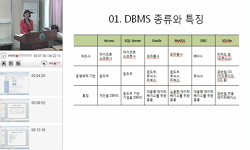Corrosion is degradation of materials’ properties due to interactions with the environments, and corrosion of most metal materials is inevitable. Corrosion damage can lead to fatal environmental consequences like toxic substance leakage, as well as ...
http://chineseinput.net/에서 pinyin(병음)방식으로 중국어를 변환할 수 있습니다.
변환된 중국어를 복사하여 사용하시면 됩니다.
- 中文 을 입력하시려면 zhongwen을 입력하시고 space를누르시면됩니다.
- 北京 을 입력하시려면 beijing을 입력하시고 space를 누르시면 됩니다.
Efficient management method of corrosion under insulation using Group numbering of continuous conditions
한글로보기https://www.riss.kr/link?id=A103001832
- 저자
- 발행기관
- 학술지명
- 권호사항
-
발행연도
2010
-
작성언어
English
- 주제어
-
자료형태
학술저널
-
수록면
590-595(6쪽)
- 제공처
-
0
상세조회 -
0
다운로드
부가정보
다국어 초록 (Multilingual Abstract)
Corrosion is degradation of materials’ properties due to interactions with the environments, and corrosion of most metal materials is inevitable. Corrosion damage can lead to fatal environmental consequences like toxic substance leakage, as well as huge maintenance and repairing costs during the suspension of process equipment in chemical and petroleum industries. There are many pipes whose outside surfaces are considerably corroded because many chemical and petrochemical plants in Japan have been used for 30 years or more. Corrosions on the outside surface of pipes progress slowly, and corrosion under insulation (CUI) is extremely difficult to detect and quantify. The proper points of pipe inspection are hard to find. Moreover, the insulation stripping work requires a large amount of time and cost. Besides, the successful managerial methods have not been established. The purpose of this research is to estimate CUI potential and corrosion rates by using case database and Group numbering of the continuous conditions.
목차 (Table of Contents)
- Abstract
- 1. INTRODUCTION
- 2. PROBLEM STATEMENT
- 3. How to evaluate
- 4. EVALUATION
- Abstract
- 1. INTRODUCTION
- 2. PROBLEM STATEMENT
- 3. How to evaluate
- 4. EVALUATION
- 5. CONCLUSIONS
- ACKNOWLEDGMENT
- REFERENCES
동일학술지(권/호) 다른 논문
-
Navigation Strategy for a Quadruped Robot on Soft Flat Ground
- 제어로봇시스템학회
- Masaaki Ikeda
- 2010
-
- 제어로봇시스템학회
- Anugrah Kusumo Pamosoaji
- 2010
-
Stereo Vision based 3D Modeling System For Mobile Robot
- 제어로봇시스템학회
- Jian-Hong Sun
- 2010
-
Configuration Control of a Forklift Vehicle using Vision System with Limited Angle of View
- 제어로봇시스템학회
- Augie Widyotriatmo
- 2010




 DBpia
DBpia






